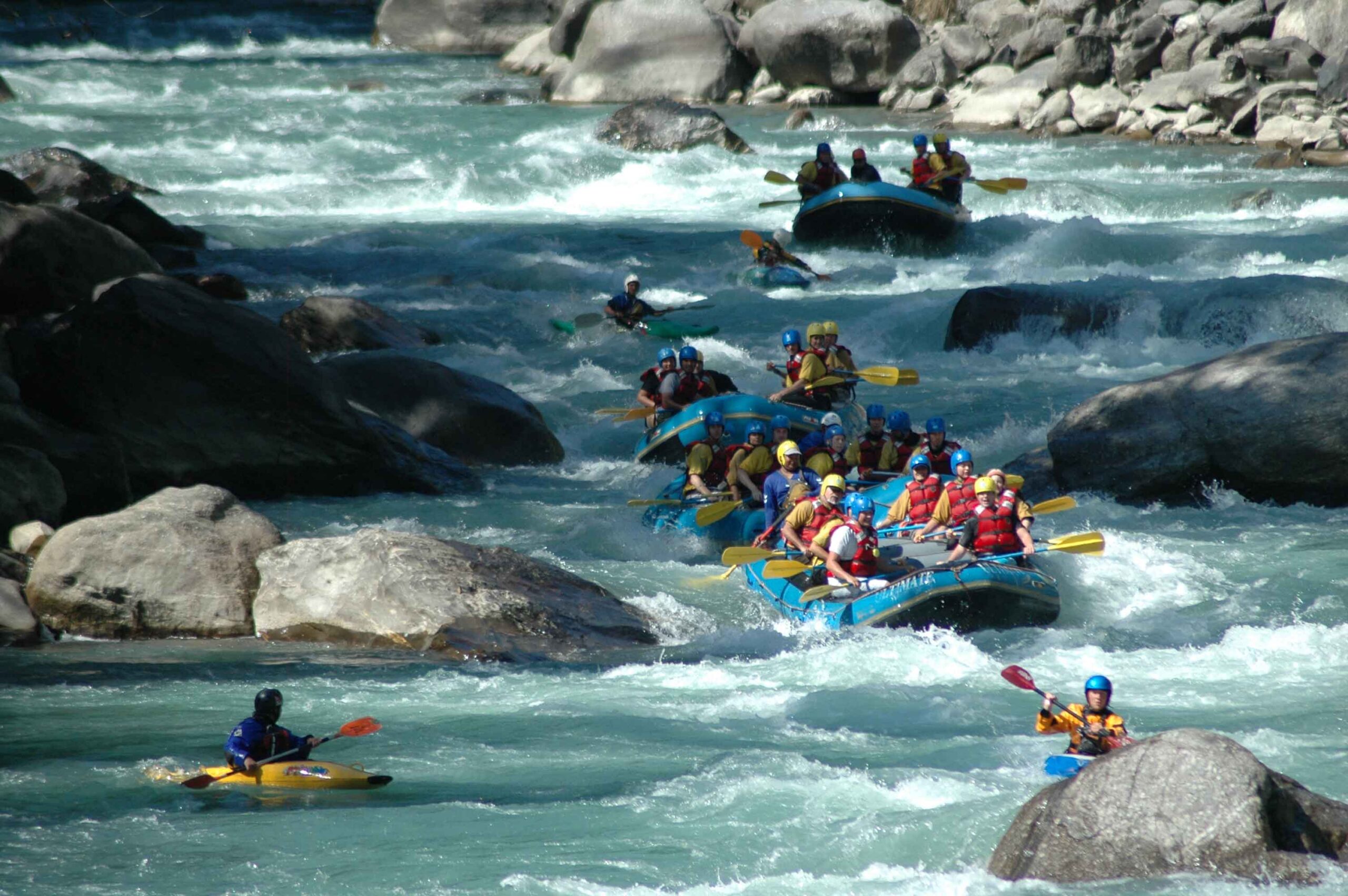Nestled amidst the majestic Himalayas, Nepal has long been a magnet for adventure seekers. From scaling towering peaks to navigating raging rivers, the country offers a diverse landscape teeming with possibilities for adrenaline-pumping activities.
However, with great potential comes significant challenges. Balancing sustainable development, responsible tourism practices, and the well-being of local communities is crucial for the long-term success of adventure tourism in Nepal.
Possibilities of Adventure Tourism in Nepal
Nepal’s potential for adventure tourism is undeniable. Boasting the world’s eight highest peaks, including the mighty Everest, it’s a trekker’s paradise.
Diverse ecosystems, ranging from the snow-capped peaks to the Terai lowlands, offer activities like white-water rafting, mountain biking, paragliding, and jungle safaris. This variety caters to various interests and skill levels, ensuring something for every adventure junkie.
Statistically Speaking:
- Economic Engine: Adventure tourism contributes over 7% of Nepal’s GDP, directly impacting thousands of Nepalis involved in guiding, portering, and hospitality.
- Tourist Magnet: In 2019, Nepal welcomed over 1.7 million tourists, with adventure being a major draw. This number is expected to rise as travel restrictions ease.
- Niche Appeal: Peak climbing expeditions attract skilled mountaineers, generating significant revenue for specialized operators and guides.
Beyond Numbers: The Tangible Benefits:
Adventure tourism goes beyond economic benefits. It fosters cultural exchange, allowing travelers to immerse themselves in the unique traditions and lifestyles of local communities.
The physical challenges can lead to personal growth and self-discovery, while the breathtaking landscapes inspire environmental awareness and appreciation.
Homestay programs and ecotourism initiatives further enrich the experience and contribute to sustainability efforts.
Challenges of Adventure Tourism in Nepal:
Despite its immense potential, the path forward for adventure tourism in Nepal is not without its obstacles.
- Safety Concerns: Inadequate infrastructure, lack of proper regulations, and inexperienced guides can pose safety risks for tourists and locals alike.
- Environmental Impact: Increased foot traffic can strain fragile ecosystems, leading to pollution and degradation. Responsible waste management and sustainable practices are crucial.
- Community Exploitation: Unethical practices can exploit local communities, depriving them of fair wages and benefits. Ensuring their participation and empowerment is essential.
- Limited Infrastructure: Remote areas often lack proper infrastructure, hindering accessibility and hindering the development of certain adventure activities.
Navigating the Path Ahead:
To ensure the sustainable growth of adventure tourism in Nepal, addressing these challenges is crucial.
- Strengthening Regulations: Implementing stricter regulations and safety standards can minimize risks and ensure responsible operations.
- Promoting Ecotourism: Encouraging and incentivizing ecotourism practices can protect the environment and create long-term benefits for local communities.
- Fair Trade Practices: Ensuring fair wages, working conditions, and community participation in tourism ventures is essential for ethical and sustainable development.
- Infrastructure Development: Investing in infrastructure in remote areas can improve accessibility and open up new possibilities for adventure activities.
Collaboration is Key:
Achieving these goals requires collaborative efforts from various stakeholders:
- Government: Implementing regulations, investing in infrastructure, and promoting sustainable practices.
- Tour Operators: Prioritizing safety, ethical practices, and environmental responsibility.
- Local Communities: Actively participating in tourism ventures and ensuring their voices are heard.
- Travelers: Choosing responsible tour operators, practicing ethical behavior, and respecting the environment and local cultures.
A Sustainable Future Beckons:
By acknowledging the possibilities and challenges, and through collaborative efforts, adventure tourism in Nepal can climb towards a sustainable future.
This can ensure economic prosperity, cultural understanding, environmental protection, and the well-being of local communities, allowing everyone to benefit from the magic of this incredible Himalayan nation.
Looking Beyond the Statistics:
Remember, statistics represent the larger picture, but the true essence of adventure tourism lies in the individual experiences.
Imagine traversing breathtaking landscapes, pushing your physical limits, and connecting with local communities.
Imagine the sense of accomplishment after reaching a summit, the thrill of navigating rapids, or the awe-inspiring views from a paragliding adventure.
These are the memories that stay long after the adventure ends, the stories that fuel future journeys, and the experiences that shape a deeper appreciation for the world and ourselves.
So, while exploring the possibilities and challenges of adventure tourism in Nepal, let us not forget the human element.
Let us embrace the potential for personal growth, cultural exchange, and environmental awareness, while ensuring that everyone involved benefits from this remarkable journey.
The mountains may be high, but the possibilities for a sustainable and impactful adventure tourism industry in Nepal are even higher. The climb for a brighter future starts now.

1 thought on “Exploring the Possibilities and Challenges of Adventure Tourism in Nepal”